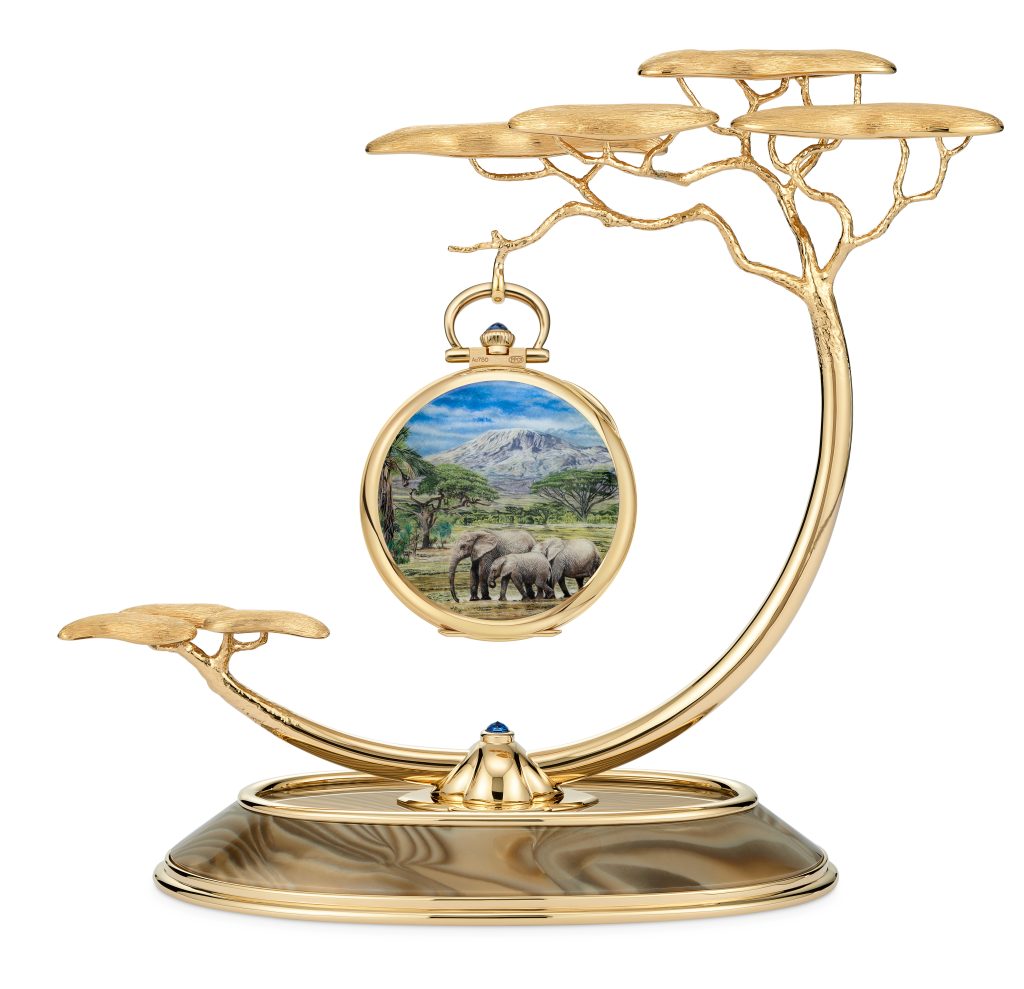
More than just complicated and technical mechanical watches, Patek Philippe, one of the world’s most renowned watch brands, keeps true to its Geneva tradition by preserving the art of decorated timepieces. Dating as far back as the 1600s, watches made in Geneva were recognised for their artisanal craftsmanship, especially in the field of engraving and enamel decoration. They are often one of a kind, too. From pocket watches to wristwatches and table clocks, various interpretations from major artistic movements of symbolism to art nouveau, these were soon combined with engraving, guilloché, and other handcrafts. These miniature works were often considered a treasured possession.
However, in the second half of the twentieth century, particularly from 1970 to 1980, hand-decorated watches weren’t as in-demand anymore, as brands were producing large quantities. Artisans were forced to seek other types of work, yet, Patek Philippe’s determination to preserve and safeguard these ancestral skills still stands strong. Though some of these creations were considered “impossible to sell”, these pieces later became the pride of the Patek Philippe Museum.


Earlier this year, the brand opened its historic headquarters on Rue du Rhône, Geneva where the general public could discover the intricacies of artful creations combined with technicalities as craftsmen demonstrated their skills. Each year, a new collection of unique and limited pieces are introduced. This year, the “Rare Handcrafts 2023” collection comprised 64 creations in total, including 21 dome clocks and miniature dome clocks, 3 table clocks, 11 pocket watches, and 29 wristwatches. The collection looks at various artisanal talents such as manual engraving, manual guilloching, gemsetting and the various ancestral forms of enamelling. This includes the Grand Feu cloisonné enamel, miniature painting on enamel, paillonné enamel, flinqué enamel, champlevé enamel and grisaille enamel. Patek Philippe has also implemented several innovative skills in watchmaking, such as wood micro marquetry and Longwy enamel on faience.



Wood marquetry, hand engraving and champlevé enamel on Pocket watch Reference 995/137J-001 “Leopard”
The marquetry technique was initially used for furniture and only a small amount of marquetry makers work in the watchmaking industry today. Marquetry is a technique in which the decorator studies the landscape or a silhouette of an animal, makes a line drawing to use as cut outs and contours, and then assembles, glues and pastes–with an entire palette of wood. The “Leopard” pocket watch Reference 995/137J-001 is a jewel of mixed techniques combining wood marquetry (363 tiny parts and 50 inlays spanning 21 different species of wood), hand engraving and champlevé enamelling.



The enamelling of the beauty of Africa is present on Pocket watch Reference 992/177J-001 “View of Mount Kilimanjaro”
Another artisanal talent you’ll find from the Rare Handcrafts collection is enamelling. Enamelling happens in the furnace by mastering metal, colours, and fire to create an art piece that lasts for years. Enamel is a soft material composed of minerals and metal oxides that fuses the surface of the watch or medium to achieve a vitrified, glossy, and smooth layer. To achieve the perfect enamel finish, the enameler has to first grind the enamel into fine grains, wash it to remove impurities, and then mix it with water to then apply to the surface. When the enamel is dry, it is then placed into a furnace that’s heated to over 800°C. This process is when the metal base becomes extremely hard, making it unalterable. Enamelled pieces are well known for being exceptional in protection against oxidation and possessing long-lasting resistance.



Hand engraving and miniature painting on enamel on Pocket watch Reference 995/119G-001 “Japanese Night”
The engraving technique is truly a delicate art in the Rare Handcrafts collection. By playing with light, the engraver’s work is done under a binocular microscope and is the closest to freehand drawing. While freehand drawing happens on paper, in watchmaking and jewellery-making, the engraver “draws” using metal with a burin—a graver. Here, the pocket watch 995/119G-001 “Japanese Night” is hand-engraved on its vegetation in low relief, a star-studded sky in miniature painting on enamel and a brook in hand-engraved mother-of-pearl.
